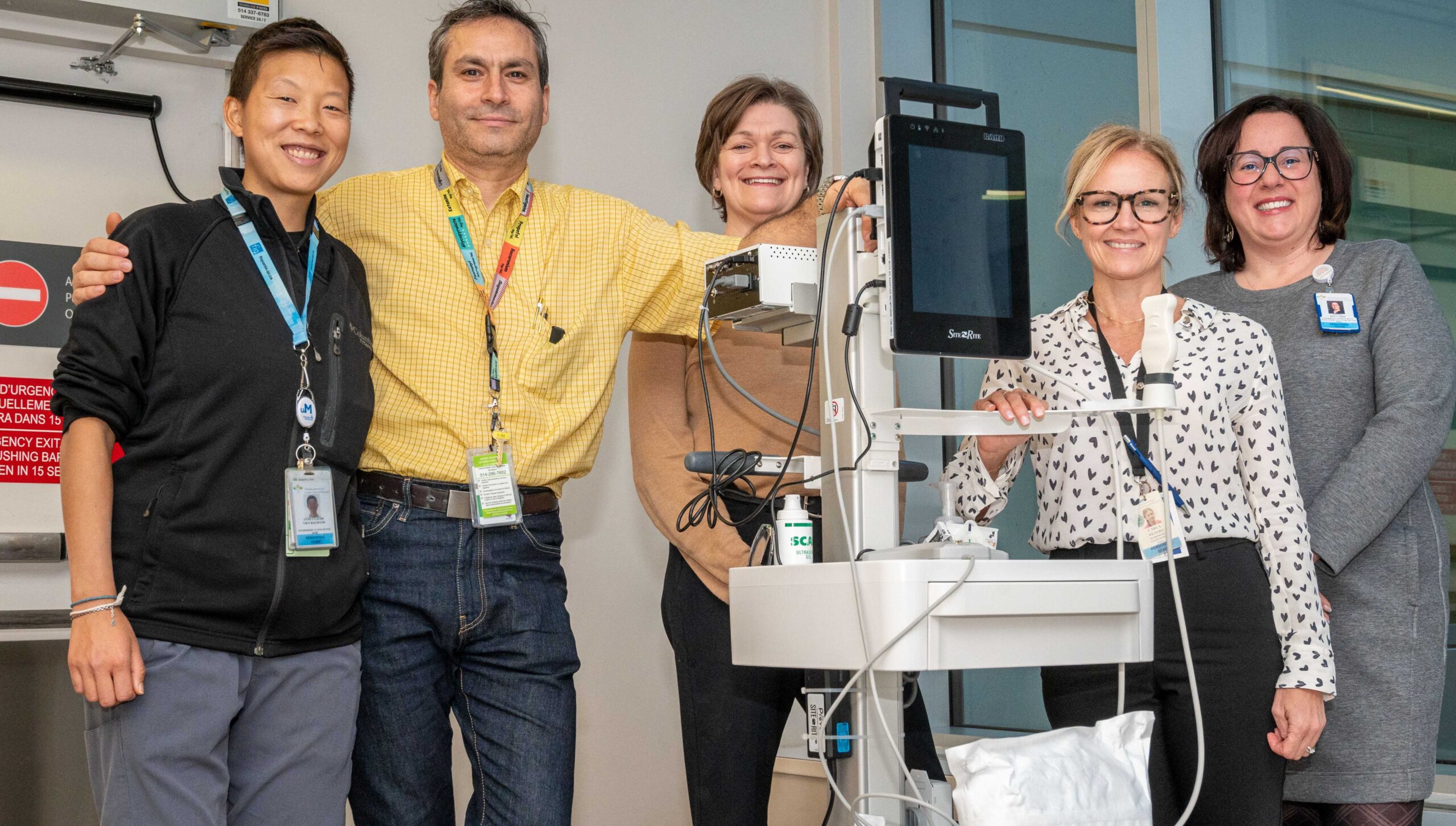
In the past, nurses at CIUSSS West-Central Montreal’s Jewish General Hospital (JGH) managed vascular access in one of two ways: by inserting a peripheral intravenous (PIV) catheter, or, in cases of “difficult” veins, prolonged therapy or irritant products, by referring patients to a physician in the interventional radiology department insert a peripherally inserted central catheter (PICC) line (approximately 1,300 per year). Wait times (3 to 5 days) would delay treatments and patient discharge. They led to multiple attempts to insert a PIV catheter, which was often painful for patients, further damaged their veins and made access even more difficult (a vicious cycle). It has also been recognized that PICCs, like any invasive device, carry certain risks of infection.
After completing special training, the vascular access nursing team (a manager, an executive consultant and 3 nurses) introduced a new process in June 2024. It involves inserting 3 vascular access devices (a PIV, a PICC and a long PIV, also known as a midline). The outcome? Improved quality of care for patients with difficult-to-access veins, thanks to a significant reduction in the number of attempts; easier access to care, since waiting times are now reduced to between 3 and 16 hours, depending on the device; better customization of venous access according to patient needs (more judicious and economical use of equipment thanks to the introduction of midline catheters and ultrasound guidance for insertion); and, thanks to the technology used (Sherlock3CG Tip Positioning System), there’s no need for an X-ray anymore to confirm the location of a PICC line.
Lead:
Sonia Boccardi, Clinical and Administrative Coordinator, Nursing Care
Contributors:
Anne-Claude Vien-Bachand, Clinical Nurse
Beniamin Rolea, Clinical Nurse
Joanne Charbonneau, Senior Nursing Advisor
Carla Peters, Clinical Nurse
Tracey Lang, Senior Advisor